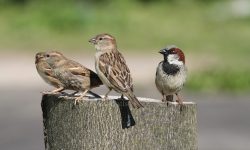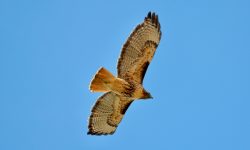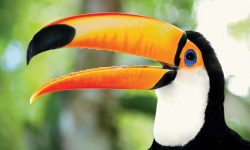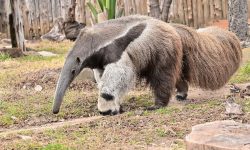The Common Loon (Gavia immer) is more than just a symbol of wild northern lakes—it’s a creature of mystery, grace, and extraordinary transformation. Famous for its eerie, echoing calls that drift across misty waters at dawn, and for its dramatic black-and-white plumage that glistens like polished stone, the loon captivates all who encounter it. But behind this breathtaking adult lies an untold journey—a hidden metamorphosis that begins as a fragile egg nestled beside a quiet shoreline and culminates in a sleek, deep-diving predator of astonishing skill. To trace the life cycle of the loon is to witness the making of a master—a bird born of water, raised by instinct, and perfected by evolution to command both lake and sky.
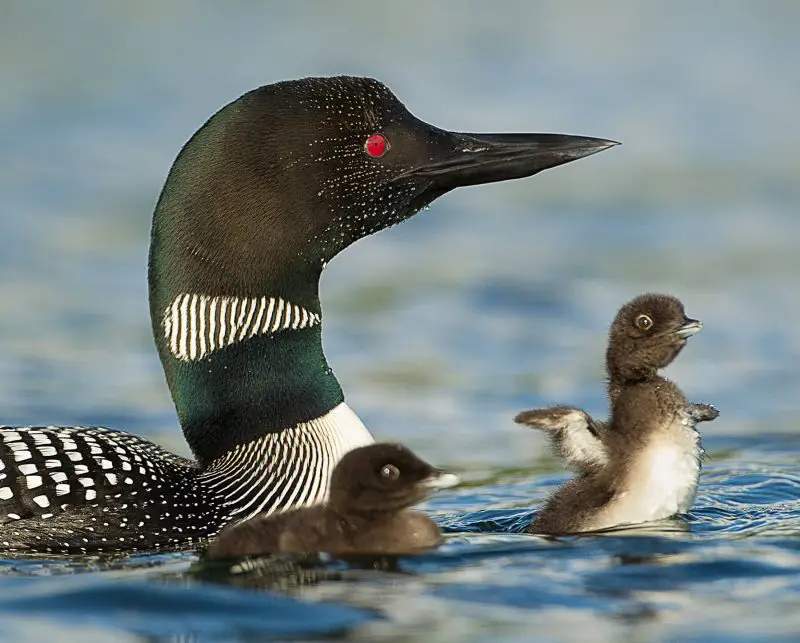
Nesting Season: The Beginning of a New Life
Returning Home
As the last ice retreats from northern lakes and the air fills with the sounds of returning wildlife, Common Loons begin their annual homecoming. Emerging from their saltwater wintering grounds along the Atlantic and Pacific coasts, mated pairs journey inland to the freshwater lakes of Canada, the northern United States, and parts of Greenland and Iceland. These aren’t random destinations—they are ancestral waters, often the very lakes where the birds themselves were raised. Loons are deeply faithful to place, and many return not only to the same body of water each year, but to the same cove, islet, or shoreline bend that once cradled their own beginnings.
Their arrival marks the start of an intensely territorial season. Mated pairs reestablish bonds with synchronized swimming, duets of wailing calls, and aerial displays meant to warn off rivals. Territories are defended fiercely. Only one pair will nest per lake or lake section, ensuring sufficient space and food for their future young.
Crafting a Waterside Cradle
Loons are master divers but clumsy walkers. Their legs are positioned far back on their bodies—a perfect adaptation for underwater propulsion, but a serious disadvantage on land. As a result, nest placement is everything. They seek out nest sites with direct water access: low banks, floating mats of vegetation, or tiny islands surrounded by reeds. These sites allow the adults to launch into the lake with a single push, especially critical if a predator approaches.
The nest itself is a simple bowl-shaped mound of natural material—mud, reeds, grasses, and lake debris—shaped and compressed by the adult’s breast and feet. Though unadorned, it’s perfectly designed for camouflage and functionality, blending seamlessly into the shoreline’s natural texture.
Eggs of the North
Once the nest is ready, the female lays one or two olive-green to brown eggs, speckled with dark markings that mimic the dappled light of the forest and the shimmering shadows of rippling water. The eggs are usually laid a day or two apart, staggering the potential hatch times—a survival strategy that can help ensure at least one chick thrives in case of food shortages or predation.
Incubation is a shared responsibility. Both male and female loons take turns warming the eggs, alternating shifts that may last for hours at a time. They sit low and still, their plumage blending into the landscape, eyes always scanning for danger. Predators such as raccoons, gulls, mink, and even large fish like northern pike pose a constant threat to the nest.
When leaving the nest to feed or evade intruders, loons may cover their eggs with bits of vegetation—a subtle but effective disguise. Their vigilant behavior and prime nesting real estate close to the water ensure not only warmth but also quick escape routes. In the stillness of spring mornings, with mist rising from mirror-like lakes, one might glimpse the silhouette of a loon sitting silently, guarding the next generation with quiet intensity.
After approximately 26 to 30 days, if all goes well, the eggs will crack open—not with fanfare, but with soft chirps and tiny movements—signaling that the next chapter in the loon’s remarkable life is about to begin.
Hatching: Vulnerable Beginnings
The First Day of Life
After nearly a month of careful incubation, the stillness of the nest is broken by tiny movements and muffled peeps from within the eggs. Using a specialized egg tooth on their upper beak, the chicks begin the slow, exhausting process of breaking free. One by one, they emerge—covered in soft, coal-black down, their eyes already open, their voices small but strong. These first sounds, echoing over still water, signal the arrival of a new generation.
Unlike many birds that remain in the nest for days or weeks after hatching, loons waste no time. Within 24 hours, the newly hatched chicks leave the nest for good, never to return. From their very first day, they are creatures of water, slipping into the lake alongside their parents and beginning a life entirely afloat. The lake becomes their nursery, cradle, classroom, and refuge.
Loon chicks are precocial—born with their eyes open, down-covered bodies, and strong instincts—but they are still fragile. They cannot yet regulate their body temperature for long periods, nor can they feed themselves. To keep them warm and safe, parents take turns carrying their young on their backs, floating together like living rafts. This behavior is iconic: a dark-bodied adult gliding across the water with a tiny, fuzzy chick nestled between its shoulder blades, protected from chilling water and hidden from predators.
Back-riding also gives the chick a high vantage point from which to watch and learn. Below them, danger always lurks: snapping turtles, northern pike, eagles, and gulls are all threats to young loons. But high on their parent’s back, they are harder to see—and much harder to reach.
Feeding and Growth
During these early weeks, both parents work tirelessly to supply food. They dive beneath the surface to catch tiny fish, aquatic insects, dragonfly larvae, and freshwater crustaceans, offering their catch directly to the chick’s waiting beak. Feeding is near-constant in the first few days, as the chick’s rapid metabolism and growth demand a steady flow of nutrients.
Gradually, the chick begins to mimic its parents—pecking at water insects, dabbling at the surface, and even making tentative dives. By the time it is two weeks old, it can remain underwater for several seconds at a time, growing stronger and more coordinated with each attempt. These early dives are clumsy but crucial: the chick is learning to become a master of its element.
During this stage, development is astonishingly fast. Down feathers thicken, muscles strengthen, and instincts sharpen. Each day brings new challenges—weather changes, learning to swim against current, identifying edible prey—but also new triumphs. In just a few short weeks, the helpless hatchling begins to resemble the powerful diver it is destined to become.
Juvenile Stage: Learning to Dive and Fly
Rapid Development on the Water
By the time loon chicks reach three weeks of age, the soft black down of their early days begins to give way to thicker, gray-brown juvenile plumage. These new feathers are not only more water-resistant but also streamlined for movement through the lake. With each passing day, the chicks grow more confident, leaving their parents’ backs behind to explore the water on their own.
This is a time of intense physical and behavioral change. Swimming becomes more purposeful. Dives become longer, deeper, and more precise. By four to five weeks, juveniles can stay submerged for over 30 seconds, chasing after small fish with surprising agility. These dives aren’t just for feeding—they’re drills, honing the skills they’ll need to survive in the wild.
During this period, the chicks’ diet shifts toward a more protein-rich selection of prey. While their parents still assist with feeding, young loons begin to catch perch, minnows, aquatic beetles, dragonfly nymphs, and other small invertebrates on their own. The more they hunt, the more efficient they become, and by 8 to 10 weeks, they are nearly full-sized, with muscular legs, sharp bills, and a growing independence. At this point, parents begin to ease off their feeding efforts, nudging the young toward self-reliance. The family unit, once tightly bonded, begins to loosen—but the lessons continue.
Taking Flight
Of all the milestones in a young loon’s life, learning to fly is the most dramatic—and the most difficult. Unlike many waterbirds, loons are built for diving, not for soaring. Their bodies are long and heavy, and their wings—though strong—are relatively short for their size. As a result, loons cannot launch from a standstill. They require long, open stretches of water—sometimes up to 500 feet—to build the momentum needed for takeoff.
Beginning around 10 to 11 weeks, juvenile loons start to practice running takeoffs. They flap their wings awkwardly while paddling across the surface, gaining speed but often splashing back down into the lake. These attempts are clumsy at first—false starts filled with sputtering flaps and belly-flops—but each trial brings them closer to success.
When a juvenile finally takes to the air, it unlocks a new world of possibility. First flights are often short—just a quick lift-off, circle, and landing—but they are crucial for developing flight muscles and coordination. By 11 to 12 weeks, most young loons are capable of sustained flight, a skill they will soon rely on during one of the greatest undertakings of their lives: migration.
As they soar for the first time, silhouetted against the late summer sky, these once-fragile chicks complete their transformation. They have become agile swimmers, skilled hunters, and strong fliers—true loons in every sense, ready to follow the ancient migratory paths of their kind.
Migration and Independence
Leaving the Breeding Grounds
As summer draws to a close and the northern lakes begin to cool, a silent signal stirs within the loons. Days grow shorter, winds shift, and the sky fills with movement. Adult loons are the first to heed the call of migration, departing the breeding lakes and heading south toward coastal wintering grounds. Their sudden absence leaves the young behind—but only temporarily.
For juvenile loons, this delay is critical. With the adults gone, the young birds remain in familiar waters for two to three more weeks, using the extra time to refine their skills—diving deeper, flying farther, and strengthening flight muscles. These final days on their home lake serve as a proving ground, preparing them for a journey they must undertake alone.
When the time comes, juveniles lift off into the autumn sky, embarking on a migration that spans hundreds to thousands of kilometers, depending on their natal region. Some will fly to the Atlantic coasts of the Carolinas or Florida, others to the Gulf of Mexico, and some westward to Pacific shores. Unlike songbirds that migrate in flocks, loons travel alone or in loose, silent formations. What’s remarkable is that these young loons navigate without any adult guidance. Scientists believe they rely on a combination of solar orientation, geomagnetic cues, and an innate migratory map encoded deep in their genes.
When they finally touch down in coastal waters—estuaries, bays, sheltered inlets—they are no longer fledglings. They arrive not as students, but as independent divers and capable travelers, completing one of the most impressive transformations in the avian world.
Life at Sea
The next chapter in a loon’s life is one of quiet seclusion and steady preparation. For the next two to three years, these immature loons live far from the freshwater lakes of their birth. They spend their days on saltwater, foraging in tidal bays, kelp beds, and rocky shorelines, honing their survival skills in a new environment.
Their appearance during this time remains subdued. Instead of the bold checkerboard back, black head, and white necklace of adults, young loons wear a muted cloak of gray, brown, and white—camouflaged for the sea. This plumage reflects both their age and status: not yet ready to breed, not yet ready to claim territory, but quietly gathering the experience they’ll need.
In these rich coastal waters, immature loons continue to perfect their underwater hunting, learning to track fish in shifting tides and turbid currents. They develop strength, stamina, and stealth—all vital for a bird that may dive over 60 meters (200 feet) in search of prey. Social encounters with other non-breeding loons provide opportunities for communication and learning, laying the foundation for future pair bonds.
Though the lakes that raised them lie far to the north, the sea shapes the young loon into an adult. And when, after several winters, they finally feel the pull to return—when hormones stir and instinct awakens—they will rise from the ocean and retrace the sky-bound paths that brought them here. Their journey will come full circle, and the cycle will begin again.
Adulthood and Mating
Reaching Breeding Age
After years spent navigating ocean currents and hunting beneath saltwater waves, young loons begin to feel the tug of their freshwater origins. By the age of five, most Common Loons are ready to breed, though a few may attempt it as early as three or four. This return marks a pivotal moment in the life cycle—not just a physical journey back to inland lakes, but an instinctive rite of passage into adulthood.
But claiming a place in the breeding world is no small feat. Northern lakes are highly competitive territories, and real estate is scarce. To breed successfully, a loon must secure a nesting territory, often by outcompeting rivals through a mix of piercing yodels, dramatic surface chases, and even violent underwater fights. Their eerie, echoing calls—which once signaled companionship in youth—now become declarations of ownership and defiance.
Once a territory is won, the next challenge is finding a mate. Loons often pair for life, especially if previous nesting attempts have been successful. Reunited pairs will return to the same lake, the same cove, even the same strip of shoreline year after year. This phenomenon, known as site fidelity, is so strong that a loon may end up competing with its own siblings or offspring for breeding rights on its natal lake. These deeply personal connections to place are part of what make loon behavior so remarkable—and so vulnerable to change.
Lifespan and Reproductive Success
In the wild, Common Loons are exceptionally long-lived. With lifespans ranging from 25 to 30 years, and some banded individuals surviving even longer, these birds experience many breeding seasons. However, longevity does not guarantee success. Raising chicks to independence is a delicate and difficult task.
A single season of reproduction is filled with uncertainty. Nesting failure can occur due to flooding, predation, or disturbance from humans and boats. Eggs may be eaten by raccoons, gulls, or mink. Newly hatched chicks may fall victim to snapping turtles, eagles, or cold snaps. Even subtle shifts in lake water levels—caused by storms or dam management—can destroy shoreline nests overnight.
Despite these obstacles, many loons persevere. In protected lakes and well-managed habitats, mated pairs often raise one or two chicks successfully each year. With each generation, they pass on not only genes but also the ancient rhythm of their kind—a rhythm of sky, water, and instinct, repeated across decades.
The success of these majestic birds isn’t measured in numbers alone, but in their enduring presence on northern lakes. When a loon’s call rings out across the water at twilight, it’s not just a sound—it’s the echo of a life cycle as elegant and enduring as the bird itself.
Threats to the Loon Life Cycle
Beneath the tranquil beauty of northern lakes, a quiet crisis is unfolding. While loons are exquisitely adapted to their watery world—with streamlined bodies, spear-like bills, and haunting vocalizations that echo across dawn-lit shorelines—their survival is becoming increasingly uncertain in the face of modern pressures.
One of the most insidious threats comes from water pollution. Mercury, acid rain, and industrial runoff accumulate in the food chain, contaminating the fish that loons rely on. Chicks exposed to mercury-laden diets may experience impaired development, reduced coordination, and lower survival rates. Lead poisoning from discarded fishing tackle remains a persistent killer, as loons often ingest lost sinkers while foraging for pebbles to aid digestion. Even a single fragment of lead can be fatal.
Boat traffic, especially during the breeding season, presents another serious hazard. The wake from speeding motorboats can swamp shoreline nests, causing eggs to wash away. Adult loons, startled by approaching watercraft, may abandon their nests, leaving vulnerable embryos exposed to sun or predators. Chicks can also be injured or killed by propellers while riding low on the water.
Meanwhile, shoreline development—the construction of cabins, docks, and roads—fragments once-pristine breeding grounds. Loons are extremely sensitive to human disturbance; they will often abandon otherwise ideal nesting sites if exposed to too much activity. This loss of secure nesting habitat places further pressure on an already fragile breeding window.
Perhaps the greatest looming threat, however, is climate change. As lakes warm, the timing and abundance of fish populations—the core of a loon’s diet—are shifting. Nesting success is linked closely to food availability and stable water levels, both of which are increasingly unpredictable. Earlier ice-outs may lead to mistimed nesting, while more frequent storms and droughts disrupt nesting attempts and migration cycles.
Because loons require different types of habitats and resources at each life stage—from protected shorelines for nesting, to fish-rich open water for chick-rearing, to saltwater coasts for winter survival—even small disruptions can ripple across their entire life cycle.
In response, conservation efforts across North America are intensifying. Wildlife agencies and nonprofit groups are working to protect loon habitats through clean water initiatives, shoreline zoning laws, and designated no-wake zones during nesting season. Anglers are being encouraged—sometimes legally required—to switch to non-lead tackle. And long-term monitoring programs are tracking loon populations, nesting success, and migration routes, using both citizen science and satellite tagging.
Through these actions, scientists and communities alike are striving to preserve more than a species—they are working to safeguard the haunting call of the loon itself, a sound that has echoed over wild lakes for millennia. Without our help, that voice may someday fall silent.
Conclusion
From a fragile egg nestled at the edge of a lake to a master diver slicing through ocean waves, the Common Loon undergoes one of the most dramatic and specialized life journeys in the avian world. Every stage of development—from hatchling to deep-water fisher, from awkward runner to streamlined flier—is a testament to the bird’s evolutionary finesse.
Understanding the loon’s life cycle not only deepens our appreciation for this iconic species but also underscores the importance of protecting the delicate ecosystems that sustain it. With the right conservation actions, future generations will continue to hear the eerie, beautiful call of the Common Loon echoing across northern waters.


